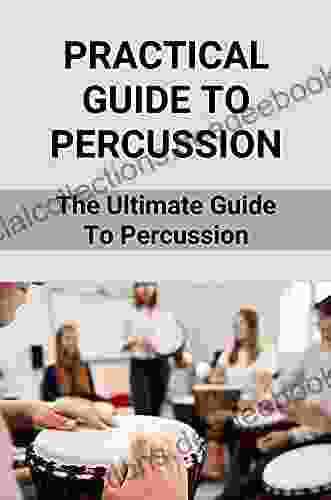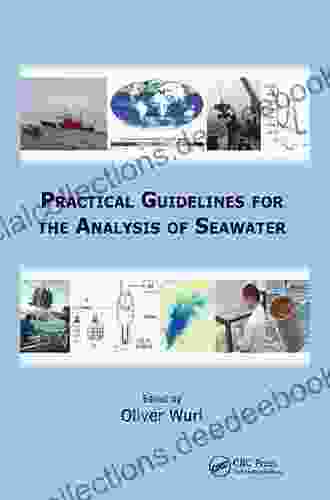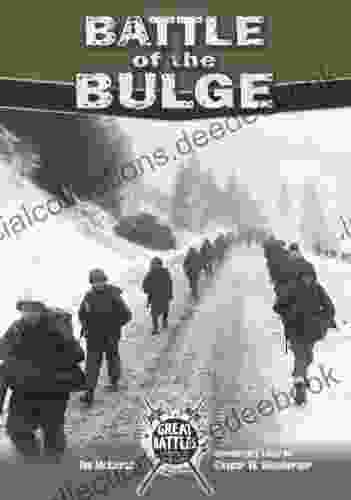Practical Guidelines for the Analysis of Seawater

Seawater is a complex and dynamic environment, composed of a wide variety of dissolved and suspended substances. The chemical composition of seawater can vary significantly depending on a number of factors, including location, depth, temperature, and salinity. As a result, the analysis of seawater can be a challenging task.
This article provides a practical guide for the analysis of seawater. The following topics are covered:
- Sampling techniques
- Analytical methods
- Data interpretation
The first step in the analysis of seawater is to collect a representative sample. The sampling technique used will depend on the specific analytes of interest. For example, if the goal is to measure dissolved oxygen, a grab sample collected from the surface of the water column may be sufficient. However, if the goal is to measure trace metals, a more specialized sampling technique, such as a Niskin bottle, may be required.
4.5 out of 5
| Language | : | English |
| File size | : | 12007 KB |
| Screen Reader | : | Supported |
| Print length | : | 408 pages |
It is important to take care to avoid contamination of the sample during collection. The sampling equipment should be clean and free of any residues that could interfere with the analysis. The sample should also be collected in a clean container and stored in a cool, dark place until it can be analyzed.
A variety of analytical methods can be used to measure the chemical composition of seawater. The most common methods include:
- Atomic absorption spectroscopy (AAS): AAS is a quantitative analytical technique used to measure the concentration of metals in seawater. AAS is a relatively simple and inexpensive technique, making it a popular choice for the analysis of seawater.
- Inductively coupled plasma mass spectrometry (ICP-MS): ICP-MS is a quantitative analytical technique used to measure the concentration of metals and other elements in seawater. ICP-MS is a more sensitive technique than AAS, but it is also more expensive.
- Ion chromatography (IC): IC is a quantitative analytical technique used to measure the concentration of anions and cations in seawater. IC is a versatile technique that can be used to measure a wide range of analytes.
- Gas chromatography (GC): GC is a quantitative analytical technique used to measure the concentration of volatile organic compounds (VOCs) in seawater. GC is a powerful technique that can be used to measure a wide range of VOCs.
- High performance liquid chromatography (HPLC): HPLC is a quantitative analytical technique used to measure the concentration of organic compounds in seawater. HPLC is a versatile technique that can be used to measure a wide range of organic compounds.
The choice of analytical method will depend on the specific analytes of interest, the sensitivity required, and the available resources.
Once the seawater sample has been analyzed, the data must be interpreted. This involves comparing the measured concentrations to established standards or guidelines. For example, the Environmental Protection Agency (EPA) has established maximum contaminant levels (MCLs) for a number of chemicals in drinking water. If the measured concentration of a chemical in seawater exceeds the MCL, then the water is considered to be unsafe for drinking.
It is important to note that the interpretation of seawater data can be complex. The chemical composition of seawater can vary significantly depending on a number of factors, including location, depth, temperature, and salinity. As a result, it is important to consider all of these factors when interpreting the data.
The analysis of seawater can be a challenging task. However, by following the guidelines provided in this article, it is possible to collect and analyze seawater samples in a way that will provide accurate and reliable data. This data can then be used to assess the quality of seawater and to make informed decisions about how to protect this valuable resource.
4.5 out of 5
| Language | : | English |
| File size | : | 12007 KB |
| Screen Reader | : | Supported |
| Print length | : | 408 pages |
Do you want to contribute by writing guest posts on this blog?
Please contact us and send us a resume of previous articles that you have written.
 Novel
Novel Page
Page Chapter
Chapter Text
Text Paperback
Paperback E-book
E-book Magazine
Magazine Paragraph
Paragraph Bookmark
Bookmark Shelf
Shelf Bibliography
Bibliography Foreword
Foreword Synopsis
Synopsis Annotation
Annotation Footnote
Footnote Scroll
Scroll Codex
Codex Tome
Tome Bestseller
Bestseller Classics
Classics Narrative
Narrative Autobiography
Autobiography Memoir
Memoir Reference
Reference Encyclopedia
Encyclopedia Dictionary
Dictionary Thesaurus
Thesaurus Resolution
Resolution Card Catalog
Card Catalog Archives
Archives Study
Study Academic
Academic Journals
Journals Special Collections
Special Collections Interlibrary
Interlibrary Literacy
Literacy Study Group
Study Group Thesis
Thesis Awards
Awards Reading List
Reading List K P Rennie
K P Rennie Alexia Nalewaik
Alexia Nalewaik Corbie Mitleid
Corbie Mitleid Sandra Hillawi
Sandra Hillawi Aaron Burakoff
Aaron Burakoff Thomas Mullen
Thomas Mullen Paul A Keller
Paul A Keller Michael R Underwood
Michael R Underwood Albert M Sandler
Albert M Sandler J Marsha Michler
J Marsha Michler American Quilt Study Group
American Quilt Study Group Alice Taylor
Alice Taylor Russ Doherty
Russ Doherty Robert Gadkey
Robert Gadkey Eloisa James
Eloisa James Robin Landa
Robin Landa Lukas Kohl
Lukas Kohl John P Bowes
John P Bowes C L Francisco
C L Francisco Mick Wall
Mick Wall
Light bulbAdvertise smarter! Our strategic ad space ensures maximum exposure. Reserve your spot today!

 Clark CampbellAnderstorp Dream Formula Grand Prix Proposal: Unveiling New Formula Circuit...
Clark CampbellAnderstorp Dream Formula Grand Prix Proposal: Unveiling New Formula Circuit... Federico García LorcaFollow ·6.3k
Federico García LorcaFollow ·6.3k Bo CoxFollow ·12.2k
Bo CoxFollow ·12.2k Chase MorrisFollow ·2.8k
Chase MorrisFollow ·2.8k David PetersonFollow ·13.2k
David PetersonFollow ·13.2k Oliver FosterFollow ·9k
Oliver FosterFollow ·9k Donald WardFollow ·14.2k
Donald WardFollow ·14.2k Dale MitchellFollow ·17.5k
Dale MitchellFollow ·17.5k Warren BellFollow ·8.8k
Warren BellFollow ·8.8k

 Andy Hayes
Andy HayesEmbracing Now: Embark on a Mindfulness Journey for a...
In a world...

 Heath Powell
Heath Powell100 Hymns for Violin and Guitar: A Comprehensive Guide to...
The violin and...

 Floyd Richardson
Floyd RichardsonBark In The Park: Poems For Dog Lovers
Dogs are our best...

 Douglas Adams
Douglas AdamsThe Barter Crusade: A Journey into the Realm of Exchange...
In a world driven by monetary transactions,...

 Nathaniel Hawthorne
Nathaniel HawthorneInsight Guides Explore Nice & the French Riviera...
Prepare to embark on an unforgettable journey...

 Carlos Fuentes
Carlos FuentesThe Ultimate Practical Guide to Percussion: Exploring the...
Embark on a journey into the enchanting...
4.5 out of 5
| Language | : | English |
| File size | : | 12007 KB |
| Screen Reader | : | Supported |
| Print length | : | 408 pages |










